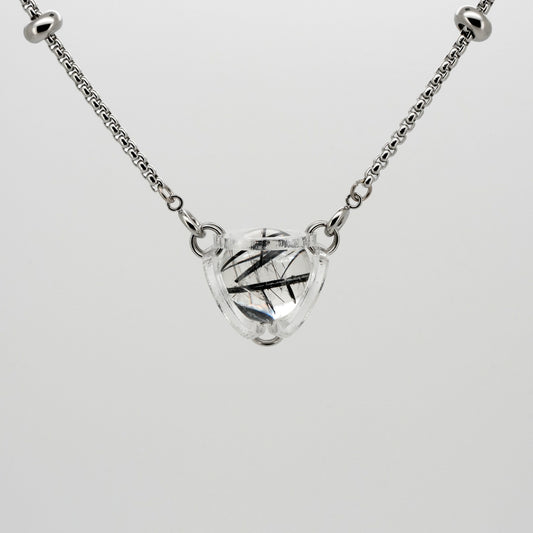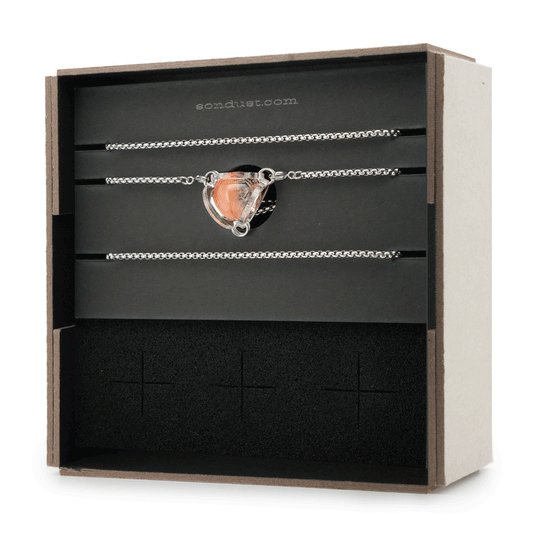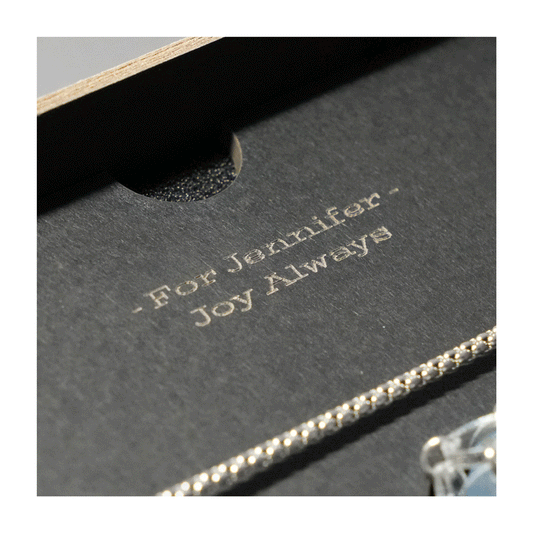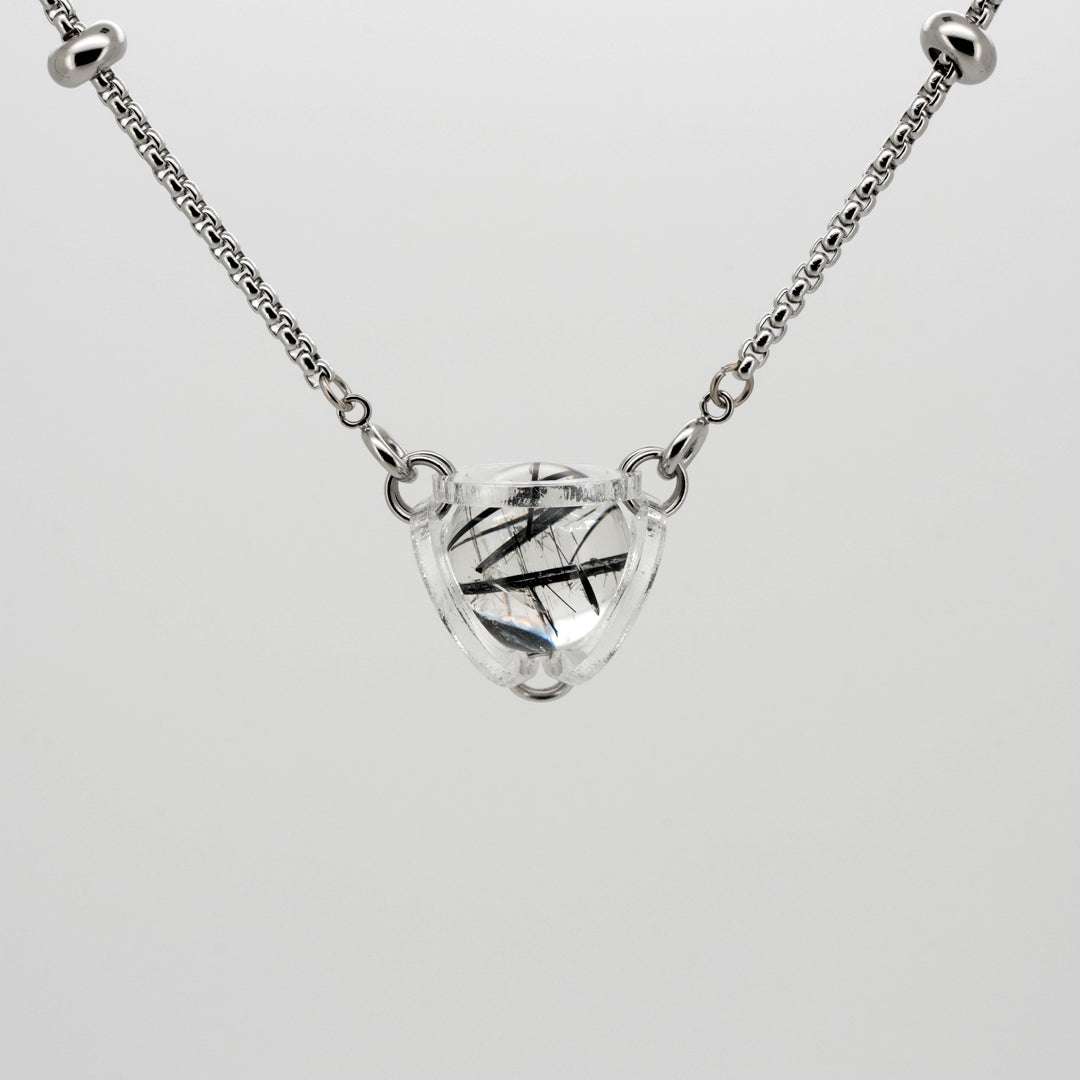
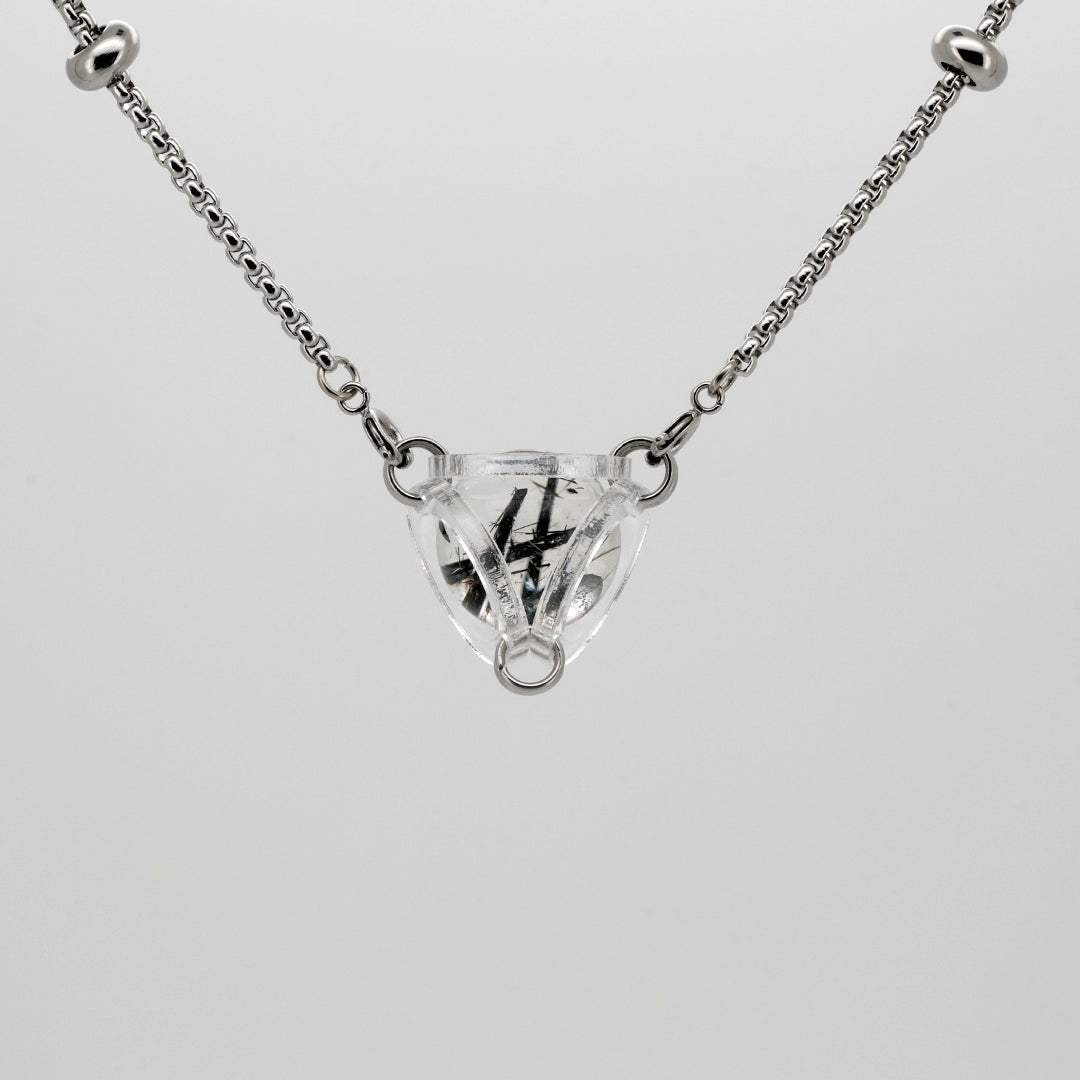
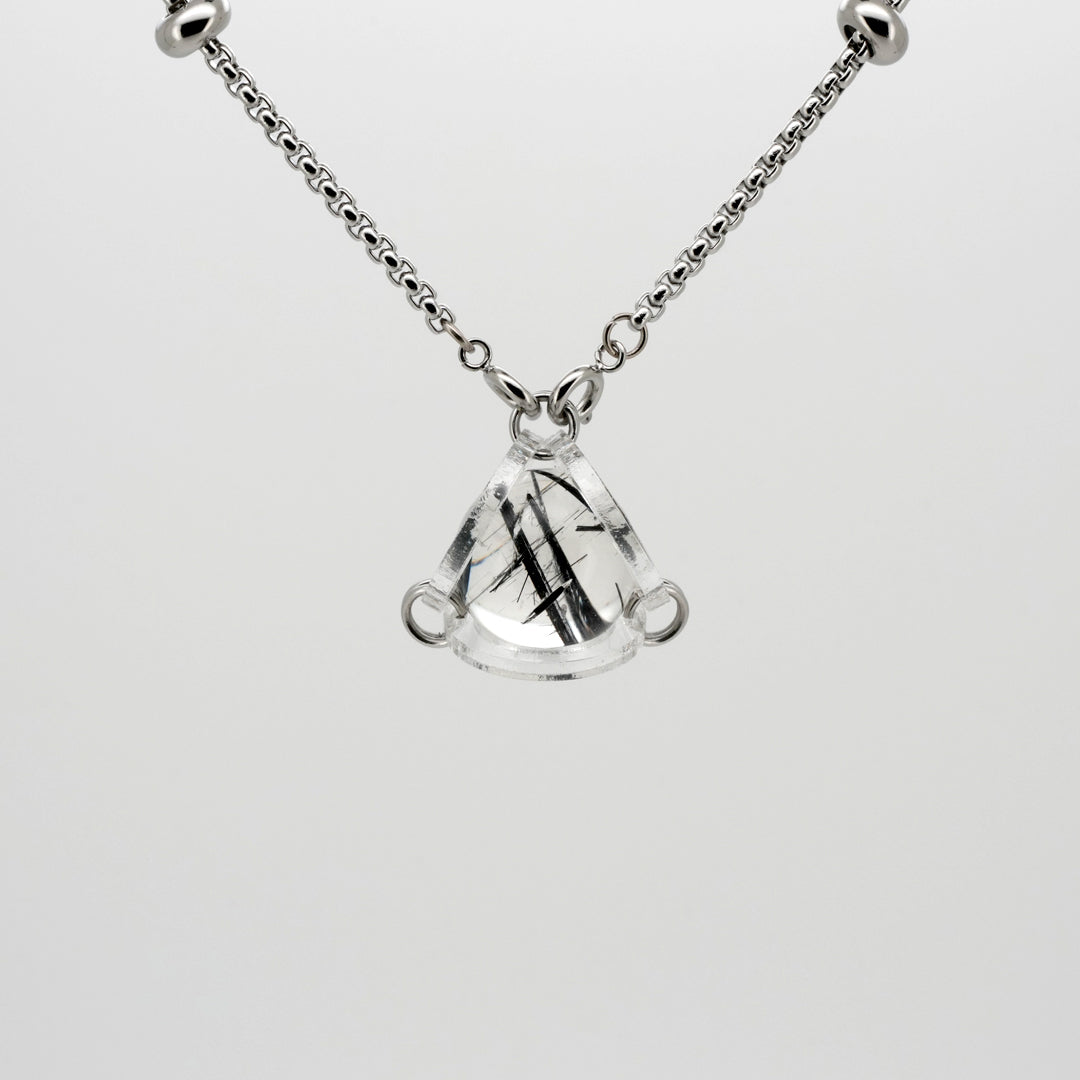
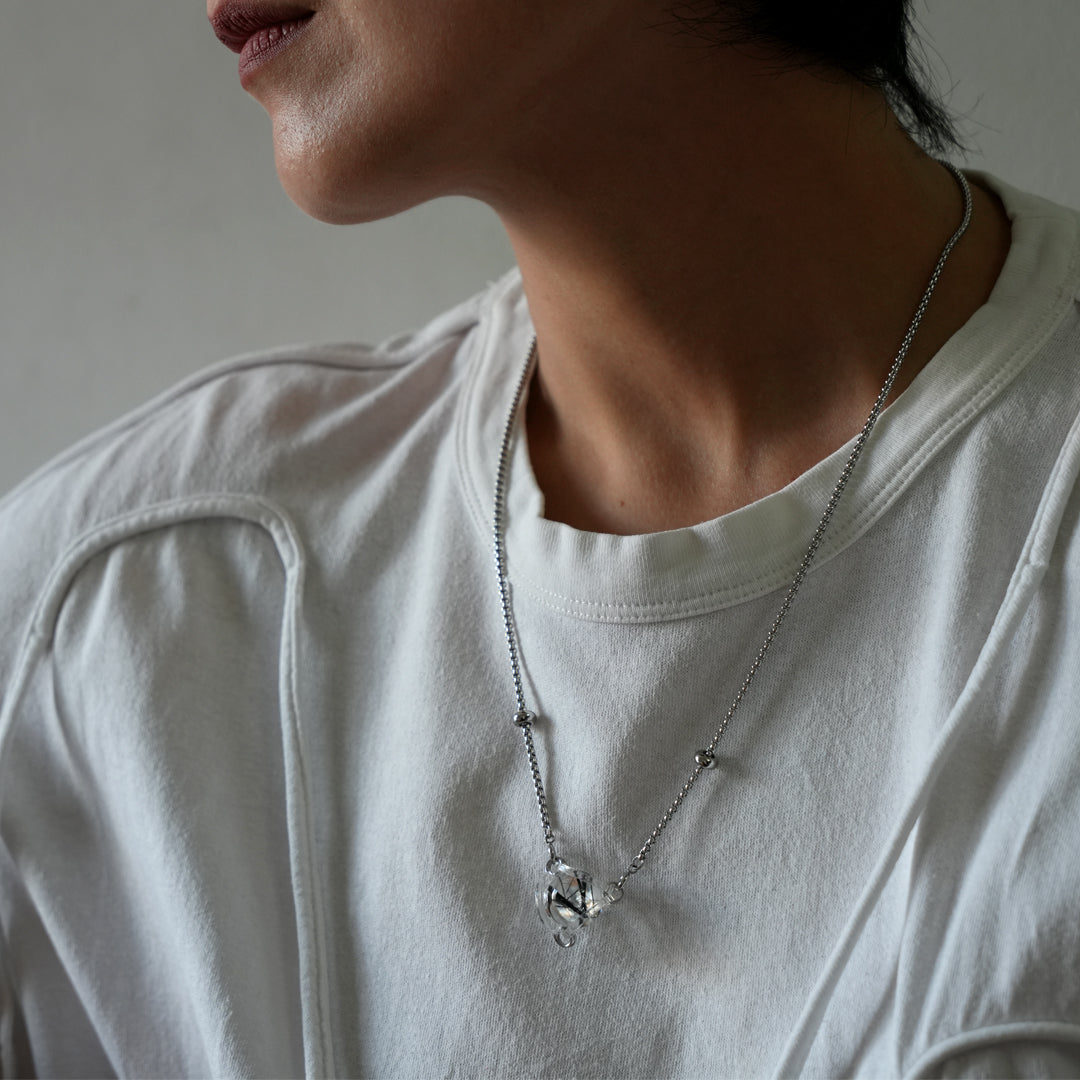
























Trajectory
Eondust chains are crafted from 316 stainless steel "square pearl" links (2mm width). Choose from two lengths to match your style:

- Fit & Style: Sits as a choker or clavicle chain, lying close to the neck for a sleek, minimalist aesthetic.
- How to Wear: Attach directly to your pendant, then secure with the small spring ring clasp at the front of your neck — no clasp at the back.
- Adjustability: Fixed length (non-adjustable).
- Weight: 5.5g

- Fit & Style: Fully adjustable from 25cm to 52cm. Wear it short (as a choker) or long (at chest level) — versatile enough for T-shirts, dresses, or open necklines.
- How to Wear: Composed of two 26cm segments with a sliding stainless steel bead (acts as a stopper):
- Adjustability: Full range (25–52cm) via sliding beads and lobster clasp.
- Weight: 11g
- For 52cm length: Attach one end to your pendant, then clasp the other end at the back of your neck.
- For shorter lengths: Attach one end to your pendant, clasp the other end near the stainless steel bead, then slide the bead toward both sides to adjust to your desired length.
- Tips: When using the long chain at its full 52cm length, the two adjustment beads double as decorative accents — they slide freely along both sides of the chain, complementing your pendant to create varied looks.
- Note: Slide the stainless steel adjustment bead slowly. Rapid back-and-forth sliding may cause the internal silicone ring to dislodge, resulting in loss of adjustability.
The dark, needle-like inclusions within the crystal, with well - distributed thickness, seem to trace unseen paths, echoing the idea of “trajectory” – as if each black rutile follows its own cosmic course. A minimalist yet striking design, it merges natural wonder with modern style, letting you carry a hint of mysterious, star-like motion wherever you go.
Collection: Trinity
Gem Type: Black Rutile Quartz
Gem Size: 12.5-13.5 mm
Material: High quality natural gemstone, 316L stainless steel, special-processed acrylic
Know the Stone:
Black rutile quartz gets its name from slender, hair-like inclusions, mainly black tourmaline, amphibole, or black rutile. Black tourmaline, the most common, resembles hair with opaque to translucent vitreous luster and curved triangular cross-sections under a microscope. Amphibole also appears as black hair-like inclusions, thought to have stronger protective properties. Black rutile inclusions, transparent to translucent, form unique "hair-like" structures in radial, bundled, or disorderly distributions.
